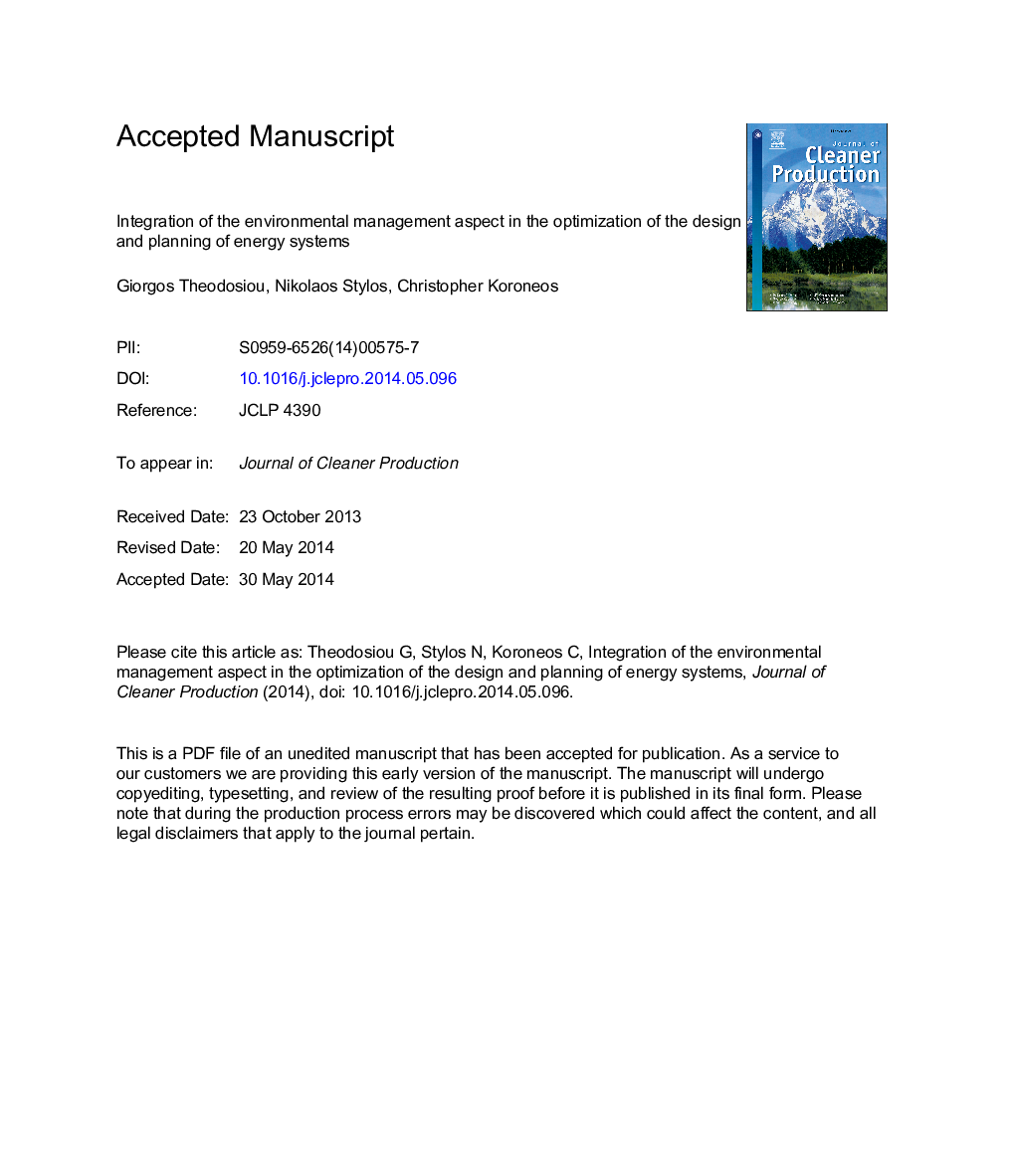| کد مقاله | کد نشریه | سال انتشار | مقاله انگلیسی | نسخه تمام متن |
|---|---|---|---|---|
| 8103285 | 1522140 | 2015 | 45 صفحه PDF | دانلود رایگان |
عنوان انگلیسی مقاله ISI
Integration of the environmental management aspect in the optimization of the design and planning of energy systems
ترجمه فارسی عنوان
ادغام جنبه مدیریت محیطی در بهینه سازی طراحی و برنامه ریزی سیستم های انرژی
دانلود مقاله + سفارش ترجمه
دانلود مقاله ISI انگلیسی
رایگان برای ایرانیان
کلمات کلیدی
طراحی محیط زیست طراحی سیستم های انرژی، تجزیه و تحلیل چرخه زندگی، بهینه سازی چند هدفه،
ترجمه چکیده
نگرانی های روزافزون در مورد آلودگی محیط زیست ناشی از فعالیت های انسان شناسی، مانند استفاده از سوخت های فسیلی برای تولید برق، بسیاری از طرفین علاقه مند به دنبال گزینه های مختلفی مانند استفاده از منابع انرژی تجدید پذیر، استفاده از پاک کننده؟ سوخت و استفاده از تکنولوژی های موثرتر برای کاهش و کنترل میزان انتشار گازهای گلخانه ای که در طول عمر مصرف انرژی های متعارف تولید می شوند. کار ارائه شده در این مقاله تمرکز بر بررسی امکان ادغام جنبه های زیست محیطی در مرحله اولیه طراحی و برنامه ریزی سیستم های انرژی معمول در رابطه با پارامتر های دیگر مانند هزینه های مالی، در دسترس بودن، ظرفیت، محل و غیره است. ادغام پارامترهای زیست محیطی در طراحی در یک زمینه که در آن مفاهیم طراحی محیط زیست مورد استفاده قرار می گیرد. با توجه به ماهیت چند پارامتر روش طراحی، ابزارهایی که استفاده می شوند عبارتند از تجزیه و تحلیل چرخه زندگی و تجزیه و تحلیل چند معیاره. مدل بهینه سازی پیشنهادی، گزینه های موجود برای استفاده از منابع مختلف و فن آوری های مختلف برای تولید برق و / یا حرارت را با کمینه کردن هزینه های مالی و اثرات زیست محیطی، با توجه به بهینه سازی چند هدفه تحت مجموعه ای از محدودیت های خاص پیاده سازی مدل پیشنهادی در قالب یک مطالعه موردی برای جزیره رودز در یونان نشان داد که راه حل بهینه سازی، هزینهای و مقرون به صرفه بودن محیط زیست، مشارکت تقریبا متوازن از انرژی های تجدید پذیر و منابع انرژی غیر قابل تجدید در ترکیب انرژی خواهد بود.
موضوعات مرتبط
مهندسی و علوم پایه
مهندسی انرژی
انرژی های تجدید پذیر، توسعه پایدار و محیط زیست
چکیده انگلیسی
The increasing concerns regarding the environmental pollution derived from anthropogenic activities, such as the use of fossil fuels for power generation, has driven many interested parties to seek different alternatives, e.g. use of renewable energy sources, use of “cleaner” fuels and use of more effective technologies, in order to minimize and control the quantity of emissions that are produced during the life cycle of conventional energy sources. The work presented in this paper focuses on the examination of the possibilities of integrating the environmental aspects in the preliminary phase of the conventional design and planning of energy systems in conjunction with other parameters, such as financial cost, availability, capacity, location, etc. The integration of the environmental parameter to the design is carried out within a context where Eco-design concepts are applied. Due to the multi-parameter nature of the design procedure, the tools that are used are Life Cycle Analysis and Multi-criteria Analysis. The proposed optimization model examines and identifiesoptimum available options of the use of different energy sources and technologies for the production of electricity and/or heat by minimizing both the financial cost and the environmental impacts, with regard to a multiple objective optimization subject to a set of specific constraints. Implementation of the proposed model in the form of a case study for the island of Rhodes in Greece revealed that an optimized solution both cost and environmental-wise, would be an almost balanced participation of renewables and non-renewable energy sources in the energy mix.
ناشر
Database: Elsevier - ScienceDirect (ساینس دایرکت)
Journal: Journal of Cleaner Production - Volume 106, 1 November 2015, Pages 576-593
Journal: Journal of Cleaner Production - Volume 106, 1 November 2015, Pages 576-593
نویسندگان
Giorgos Theodosiou, Nikolaos Stylos, Christopher Koroneos,
